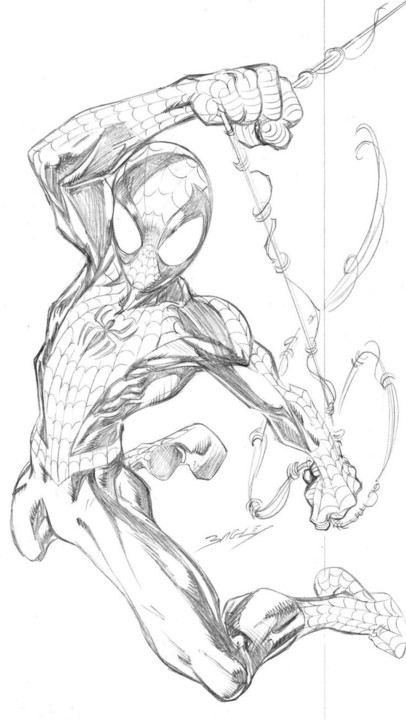
Spider-man and the legal industry
For nearly three decades, I have enjoyed reading comic books. And in an odd, unexpected way, this has recently helped me understand the virtues of co-design and process mapping. These tools are increasingly used in the legal industry. As a partner, I often rely on legal process managers and design thinking moderators to apply such techniques, with great success. They are based on visualisation and the power of images. They help us better understand and anticipate our clients’ needs. They offer us an opportunity to structure our teams in a leaner, more efficient way. But embedding these methods in law firms takes time. We are trained as experts. We are very good at drilling down intricate technical issues, but are not always inclined to embrace new ways of approaching problems. On a bad day, we might even view them as nothing but esoteric gizmos.
Now, let's move onto the world of comic books. The US comic book industry revolves around three major publishing houses: Marvel (home of Spider-Man, the Avengers and the X-Men to name a few), DC Comics (Superman, Batman and Wonder-Woman, etc.), and Image, a more recent, independent player. Since the mid-1960s, and in spite of many changes and disruptions (including a Chapter 11 restructuring), Marvel – the "House of Ideas" – has always been able to remain at the top of the industry. Why? Because it revolutionised the way comic books are produced. And I see this relevant to law firms in two ways.
1- The "Marvel Method"
Traditionally, creating a comic book relies on a two-step approach. The writers come up with a story, sequence the plot panel by panel, together with all scripted dialogues. The pencilers and inkers then translate all this into images, and voilà! This process is often described as the "full script" way.
In the early 60s, two of Marvel’s founding fathers, Stan Lee and Jack Kirby, did not think that "full script" was necessarily ideal. So they introduced a new way of developing comics, the "plot script" model, later dubbed the "Marvel Method". How does this work? First, the writer produces a synopsis for the penciler. Based on these general plot indications, the penciler draws panels that are handed out back to the writer, who then adds dialogues and boxes of text to give greater clarity to the visuals, to the extent required. The result of this innovative approach proved amazingly successful. Marvel comic books were more visual, less wordy than those published by DC. Pencilers enjoyed their newly found freedom. Writers were able to generate more story lines, and therefore sustain the frantic publishing pace imposed by the editorial board (each series requires a new story of more than 20 pages a month). To this day, some of the most prominent Marvel artists still rely on the Marvel Method. And DC ended up adopting it too.
"More visual, less wordy". Does this ring a bell? This is exactly what lawyers are told to do whenever they produce a pitch, or a brochure or any other kind of marketing material. Exchanging ideas back and forth, relying on a visually-driven, collaborative and empowering creative process? All of this is co-design 101.
Let’s apply this to law: if our clients are writers, we the lawyers should perhaps try and act as "plot script" pencilers.
2- Creative retreats
Since the 1960s, Marvel has developed a complex, multi-layered universe that requires a lot of editorial efforts to ensure consistency and continuity. When you release more than 10 new issues per week on average, you better make sure that everything fits in together. Otherwise your fan-base will complain. Loudly.
To achieve this, editors, writers and creative directors get together once a year. And for a full, intense, two-day "creative retreat", they map out what the next year of Marvel will hold: general plot lines, cross-over events between titles, who dies, who comes back to life, who turns into a villain, etc. Heated discussions, iterations, ideations, "swim lanes" type diagrams posted on the wall to make sure that the various universes of the Marvel galaxy form a cohesive "multi-verse": I can't think of a better example to illustrate the power of process mapping for a team that must carry out a complex mission. Or say, a cross-border M&A transaction...
I would never have thought that comic books could shed an interesting light on the deep transformations that our legal industry is going through. I am conscious that this won't necessarily make you want to grab a copy of a comic book any time soon. But I just hope that these examples will convince you that change can be good, and that legal design and process mapping can bring tremendous value to our legal industry.
Associate (Corporate M&A)
5yThanks for a really great article, Sir! I really enjoyed it and as a keen fan of business, innovation and law, I will sleep tonight with a little more hope for rapid change in the legal industry.
International Corporate Partner at Forsters LLP
5yGreat article Eric - I live the creative application of comic design to traditional legal processes.
You might like this Eric Fiszelson - http://bit.ly/2rjJK1o